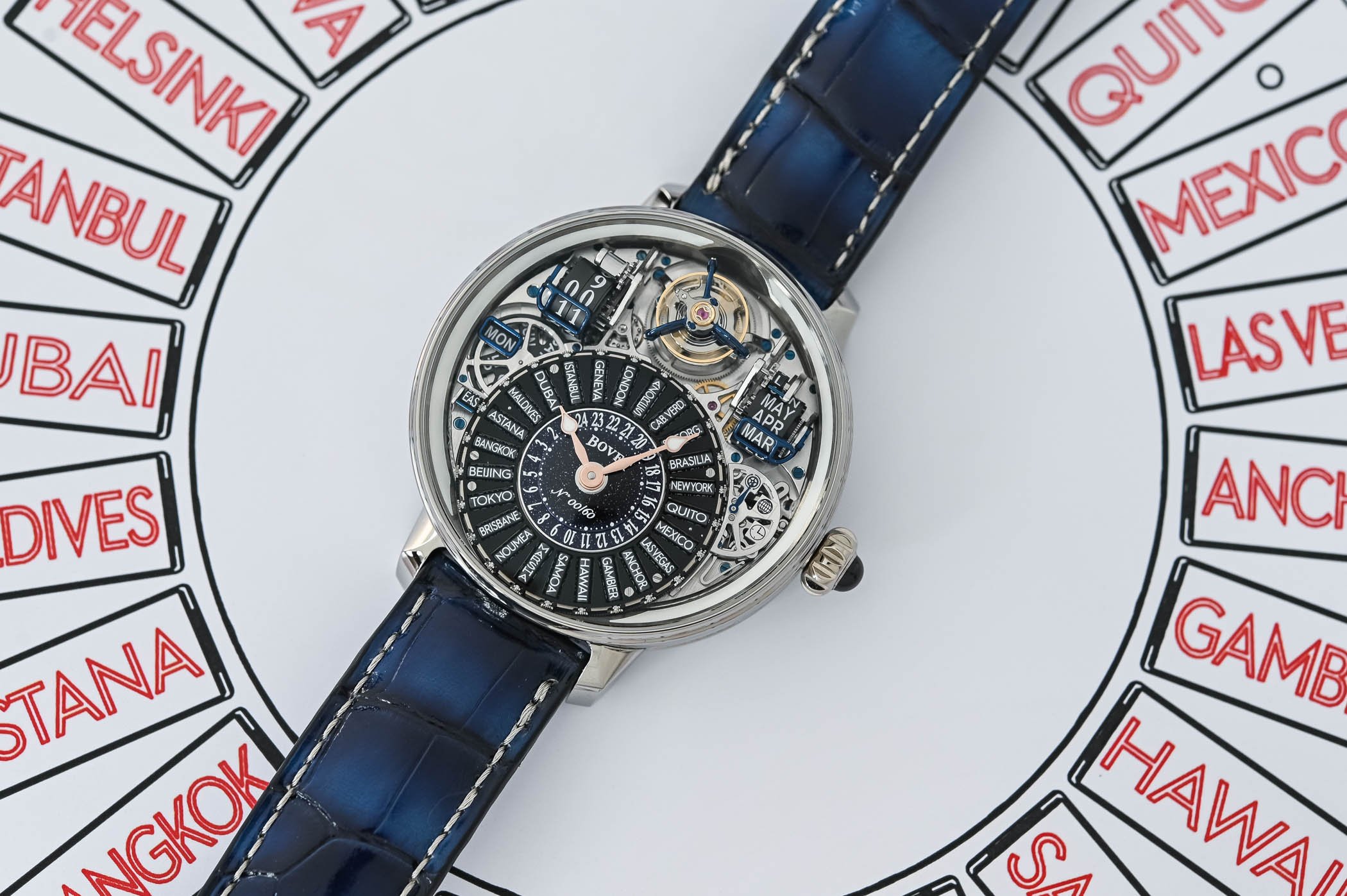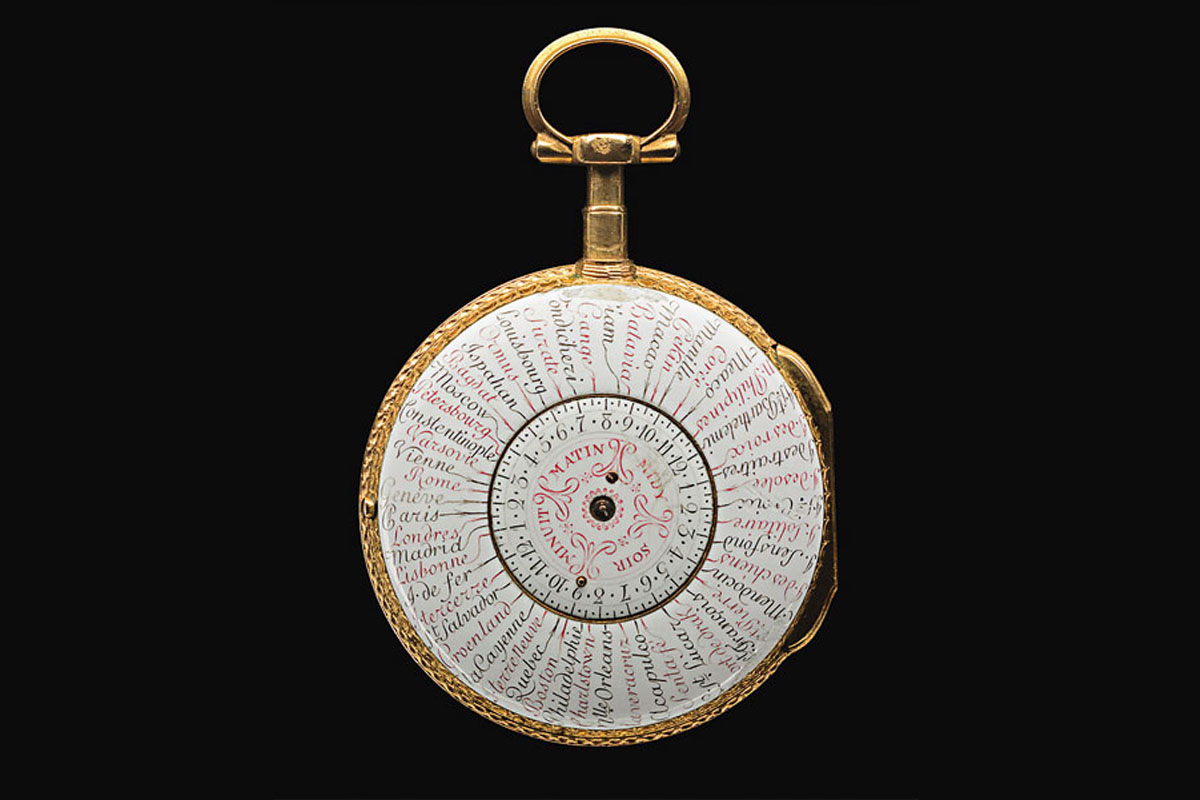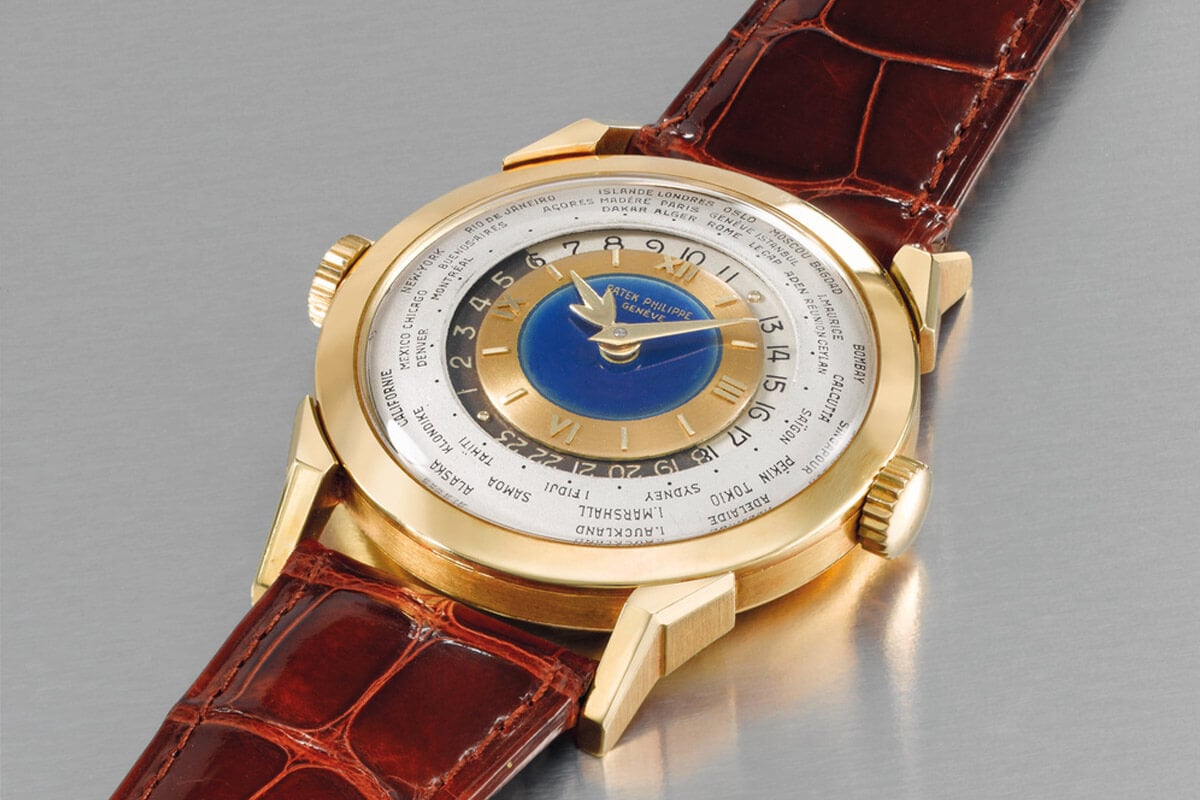The Bovet Récital 28 Prowess 1 – A World’s First Reconciling World-Timer and Daylight Saving Time
A spectacular perpetual calendar, tourbillon World-Timer coping with DST intricacies.

In 2001, Pascal Raffy, a passionate collector of haute horlogerie, acquired the prestigious name Bovet and embarked on a remarkable journey to revive the brand to its former glory. Mr. Raffy spared no effort in establishing a manufacture characterized by an exceptional level of integration. Among its various achievements, Bovet introduced a series of exquisitely crafted and complex watches. Notable among these are numerous astronomical watches, including the Shooting Star, the Astérium, and the Récital 22 Grand Récital, as well as the Récital 26 Chapter Two. Bovet now unveils the Récital 28 Prowess 1, a world premiere that addresses one of the major challenges faced by traditional world-timers: Daylight Saving Time (DST). In addition to this remarkable feat, the Bovet Récital 28 features a flying tourbillon, a perpetual calendar with roller-based indications, and an impressive 10-day power reserve.
Traveller’s Watches and the DST Problem
Before the invention of unified time systems, each city operated on its own local time, governed by the movement of the sun. Even neighbouring cities often had different time settings. Travellers faced the challenge of tracking time with two options: carrying multiple watches or watches displaying various local times. For instance, double-time pocket watches were designed to concurrently track local and railway times. The advent of the Industrial Revolution facilitated extensive travel, spurred by the development of railway networks, which in turn led to the establishment of standard time arrangements. More details to be read here.

Political decisions began to dictate the regulation of time. At an international level, a simple yet practical concept emerged and gradually gained acceptance worldwide, in particular thanks to the initiatives of Scottish-born Canadian engineer Sandford Fleming. The Prime Meridian conference convened in Washington D.C. in 1884, bringing together representatives and delegates from over 20 nations to agree upon a standardized time system. The globe was subsequently divided into 24 time zones, each spanning one hour, as we recognize today, with each zone covering 15° of longitude (although it’s worth noting that there are now more time zones worldwide, with some calculated in intervals of half or quarter of an hour). The reference meridian was established at Greenwich, England.

For watchmakers, this paved the way for the creation of world timers. Louis Cottier, in particular, gained renown in horology for his watches indicating global time as adopted during the Meridian Conference, all displayed on a single dial. From the 1930s onward, Cottier produced such watches for prestigious clientele including Baszanger, Vacheron Constantin, Patek Philippe, Rolex, and Agassiz, among others.

Cottier’s distinctive contribution was in designing watches that showcased local time with hour and minute hands in the centre, coupled with a rotating 24-hour ring encircling the names of various cities or locations. The city of reference occupied the 12 o’clock position, with the central part of the dial indicating local time. Cottier’s system remains the foundation for most world timers today, although the fixed city indication was later made adjustable through the use of a second crown, pusher, or simply a rotating bezel, while the fundamental design principle remained unchanged.
Despite their practicality and popularity among watch enthusiasts, worldtimers have one major drawback: most of them cannot accommodate Daylight Saving Time (DST). DST is the practice of advancing the clocks by one hour ahead of standard time to make better use of daylight during the summer evenings. Germany and Austria were the pioneering countries to adopt DST in 1916, with others following suit, including the United States in 1918. However, many countries or regions around the world do not observe Daylight Saving Time at all. Adding to the complexity, not all countries synchronize their entry into or exit from DST on the same dates. For example, in the United States, DST begins on the second Sunday of March, whereas in Europe, it commences on the last Sunday of March. And if you are interested in one of the very few traveller watches handling DST, you might also want to check out the Glashütte Original Cosmopolite.
Solving DST, the Bovet Recital 28 Prowess 1
Traditional world-time displays fixed time differences between given cities and time zones, making them unable to handle the complexity of DST. Bovet’s innovative solution, launched in the Récital 28 Prowess 1, involves displaying the cities/time zones on rollers. Each of the 24 rollers has four positions that can be switched by pressing the crown: UTC, AST (American Summer Time), EAS (Europe and America Summer Time), and EWT (European Winter Time) which can be read on an additional roller at the left-hand side of the worldtime indication. Besides its coaxial push-piece, the crown has 3 positions, winding, worldtime setting and time setting (with a small indicator at 3 o’clock allowing to visualize which mode is engaged).
In addition to this remarkable feat, the movement powering the Récital 28 Prowess 1 features a flying tourbillon, a perpetual calendar with roller-based indications, and an in-house movement with an impressive 10-day power reserve.
While based on Bovet’s patented double-sided flying tourbillon, the tourbillon regulator in the Récital 28 is new. The escapement resides on one side of the center fixation point, with the cage bearing the balance wheel and its balance spring on the other. Operating at a frequency of 18,000 vibrations per hour, it comprises 62 parts, weighing just 0.35 grams. The perpetual calendar boasts date, month, and leap year indications displayed on rollers, resulting in a captivating, complex yet highly legible presentation. Another noteworthy feature is a safety mechanism that prevents adjustments while the date change mechanism is engaged, ensuring no risk of damaging the movement in the process. Inept adjustment can potentially cause damage to the mechanism, leading to time-consuming and costly repairs.
The reverse side of this intricately complex movement can be admired through the exhibition caseback, in particular the calendar mechanism as well as the power reserve indication on 10 days. As one would anticipate from Bovet, the finishes are of the highest quality. Each of the 744 components undergoes meticulous hand-finishing, with the plate adorned with perlage and Côtes de Genève, while the bridges are also hand-engraved.
The Récital 28 Prowess 1 is housed in a brand-new size for Bovet’s trademarked sloping case (46.3mm diameter x 17.85mm thickness) inviting enthusiasts to explore the R28 indications and intricacies. The watch is offered in polished pink gold, platinum or grade 5 titanium (as photographed here). The dial’s inner and outer rings are made of aventurine, and the use of luminescent material gives the watch a whole different dimension in the dark.
The Bovet Récital 28 is worn on a superb alligator strap and secured by a folding buckle. The production will be highly limited as Bovet estimates that they can only manufacture 8 pieces per year. The price starts at CHF 650,000 for the titanium version.
One might sometimes be tempted to think that everything that can be invented has been invented as far as mechanical watchmaking is concerned. Well, not yet. Kudos to Bovet for creating the captivating Récital 28 and reconciling World Time and Daylight-Saving Time… For more information, please visit www.bovet.com.


















1 response
Not my thing, but Bovet at its best.